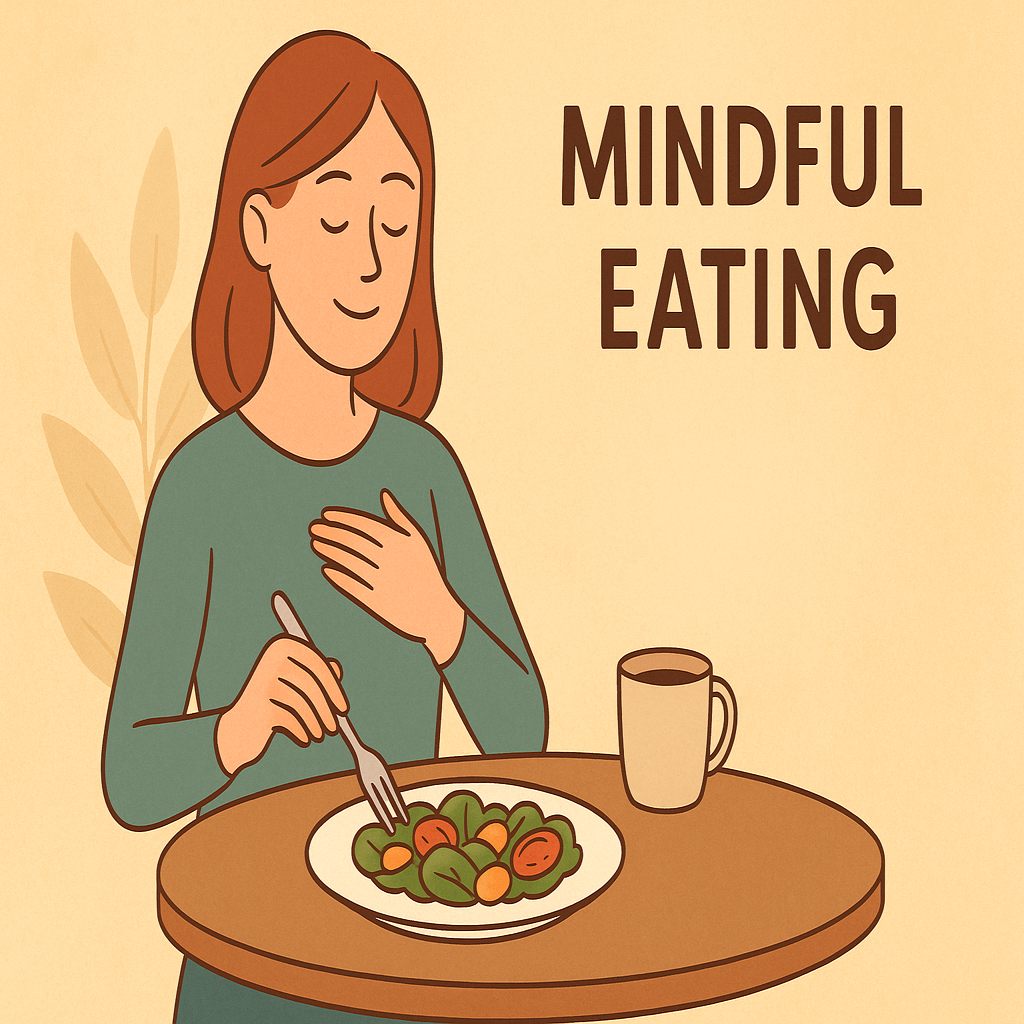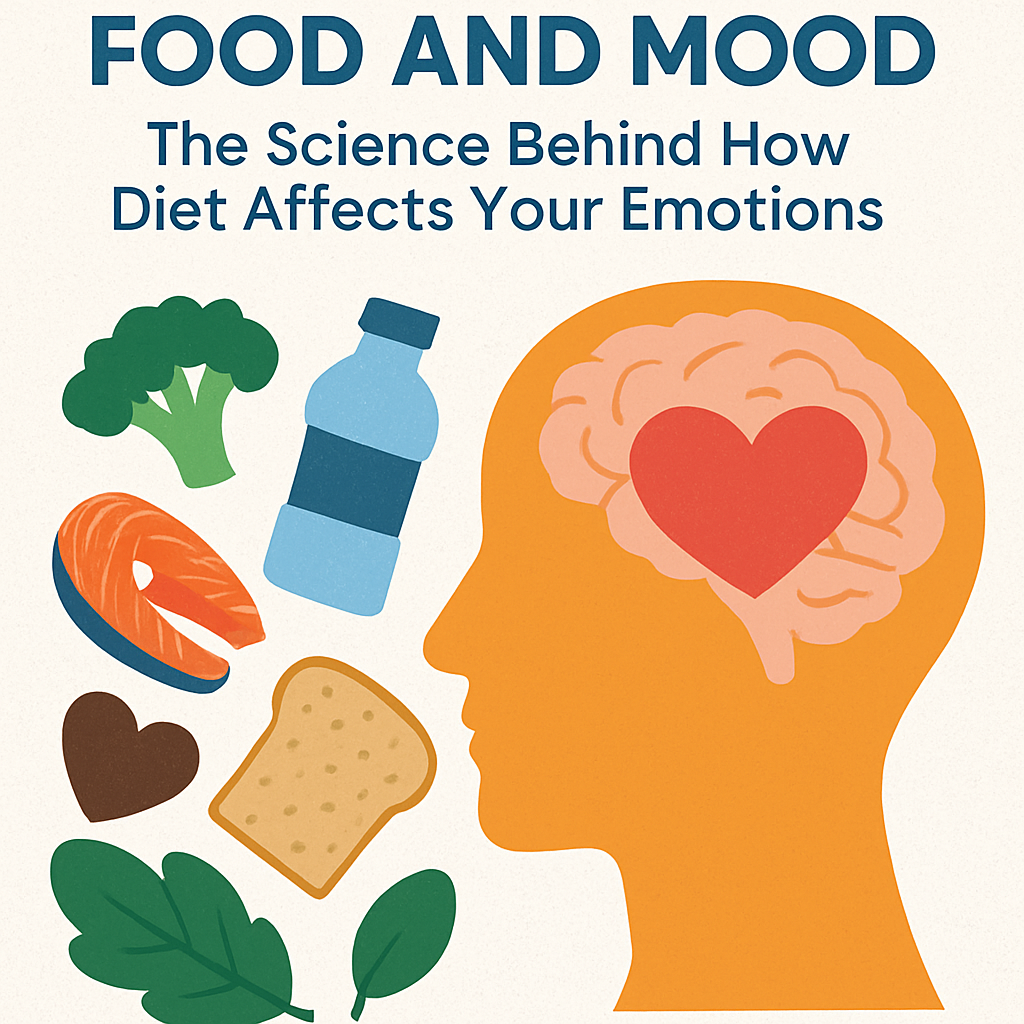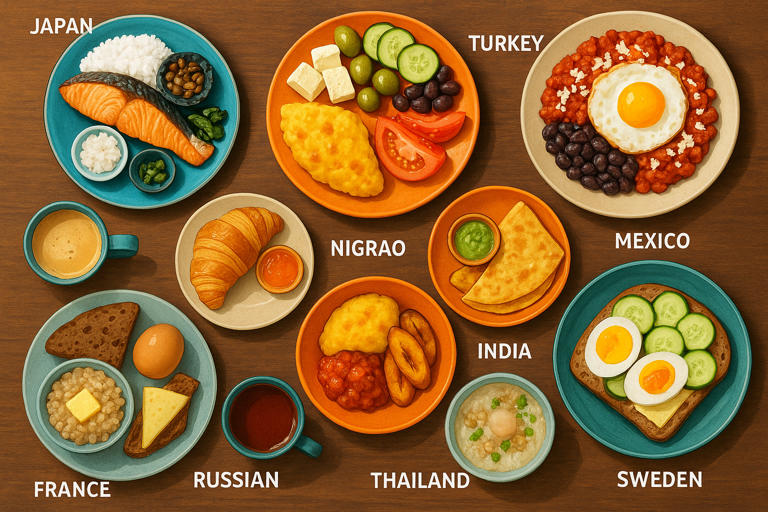In our fast-paced world, food has often become something we rush through — eaten while working, scrolling through our phones, or even standing up. Many of us eat not just when we’re hungry, but when we’re stressed, bored, or tired. The result? A disconnection from what, why, and how we eat.
Mindful eating offers a simple but powerful solution. It’s not a diet — it’s a practice. And when done consistently, it can completely change the way you view food and nourish your body.
What Is Mindful Eating?
Mindful eating is the practice of being fully present and aware during meals. It means:
- Paying attention to hunger and fullness cues
- Eating slowly and without distraction
- Noticing the colors, smells, textures, and flavors of your food
- Listening to how your body responds to each bite
This approach draws from mindfulness — a concept rooted in ancient meditation traditions — and applies it to one of the most essential parts of our lives: eating.
Why It Matters
Most people know what they should eat, but the real challenge is how they eat. Mindless eating habits — like snacking out of boredom or overeating in front of the TV — often override our natural signals. Over time, this can lead to:
- Overeating and weight gain
- Emotional eating patterns
- Poor digestion
- Feelings of guilt or stress around food
Mindful eating helps you reconnect with your body’s signals and rebuild trust in your own ability to eat well — without restriction or judgment.
Benefits of Mindful Eating
The beauty of mindful eating is that it benefits both your body and your mind. People who adopt mindful eating habits often report:
- Improved digestion
- Better portion control
- Less emotional eating
- Greater enjoyment of meals
- A more positive body image
It also encourages a healthier relationship with food — one based on appreciation and awareness, rather than control or guilt.
How to Start Practicing Mindful Eating
You don’t need special tools or a new diet plan to begin. Here are simple ways to bring mindfulness to your meals:
1. Eat Without Distractions
Turn off the TV. Put down your phone. Even just a few minutes of quiet focus during a meal can shift your entire experience.
2. Take It Slow
Chew each bite thoroughly and take small pauses. This gives your body time to register fullness and helps you enjoy flavors more deeply.
3. Check In With Your Body
Before eating, ask: Am I actually hungry? After eating, check: How full do I feel? This helps avoid eating out of habit or emotion.
4. Notice the Details
Take a moment to observe your food. How does it smell? What colors do you see? What textures are in each bite? Eating becomes more enjoyable when you truly engage your senses.
5. Eat With Gratitude
Take a moment to feel thankful — for the ingredients, the people who prepared your meal, and your ability to nourish yourself. Gratitude brings a positive energy to your meals.
6. Start With One Meal a Day
You don’t have to overhaul your entire eating routine overnight. Start by practicing mindfulness with one meal a day — breakfast is a great place to begin.
Mindful Eating vs. Diet Culture
Unlike dieting, mindful eating isn’t about rules, restrictions, or “good” vs. “bad” foods. Instead, it invites you to explore how food makes you feel — physically, emotionally, and mentally.
This approach can be especially helpful for people recovering from disordered eating patterns. It encourages curiosity instead of shame and replaces self-criticism with self-compassion.
Applying Mindfulness to Emotional Eating
Many people turn to food for comfort — and that’s okay. But mindful eating helps you recognize why you’re reaching for that snack. Are you stressed? Bored? Lonely? Identifying the emotion can help you meet that need in a healthier way, whether that’s through movement, connection, or rest.
Mindful eating doesn’t mean you’ll never eat for comfort again — it just helps you choose it more consciously, rather than doing it on autopilot.
Final Thoughts
Mindful eating isn’t about perfection — it’s about presence. By slowing down and tuning into your meals, you can nourish your body more fully and enjoy food in a whole new way.
You don’t need fancy tools or strict rules to begin. All it takes is a bit of awareness, a willingness to listen, and the curiosity to explore. Over time, mindful eating can help transform not just your diet, but your entire relationship with food — one bite at a time.


